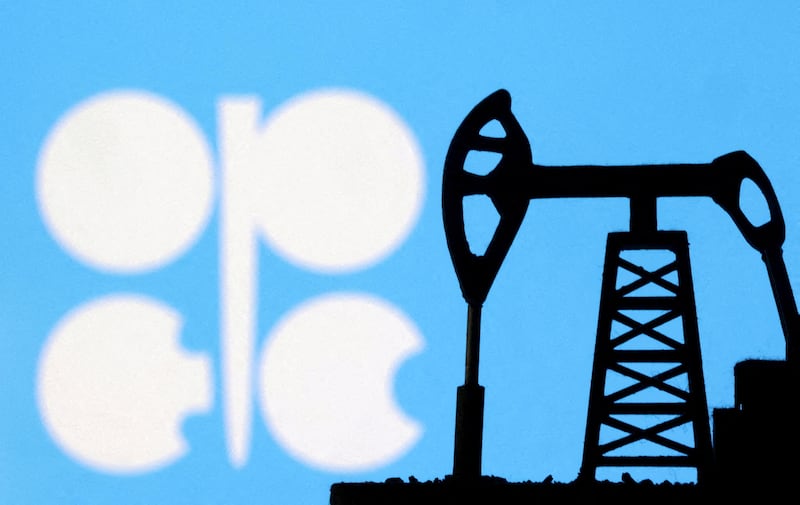Oil prices closed in on the $90 a barrel mark on Wednesday after the Opec+ alliance decided to stick with crude supply cuts for the first half of the year.
Brent, the benchmark for two thirds of the world’s oil, was trading 0.73 per cent higher at $89.57 a barrel at 4.50pm UAE time. West Texas Intermediate, the gauge that tracks US crude, was up 0.66 per cent at $85.71 a barrel.
The producers group made no policy changes following an online meeting on Wednesday, implying that Opec+ voluntary output cuts of 2.2 million barrels per day would remain in place until the end of June.
Opec+ reiterated the need for countries that are producing above their quotas to scale back and compensate for the excess output.
“Participating countries with outstanding overproduced volumes for the months of January, February and March 2024 will submit their detailed compensation plans to the Opec Secretariat by 30 April 2024,” the group said.
It also welcomed Russia’s decision to focus on reducing crude production rather than exports in the second quarter to evenly share supply cuts with other member countries.
The group said it would continue to “closely assess” market conditions and that member countries were ready to take additional measures if required.
Oil prices have gained more than 16 per cent since the beginning of the year, supported by tighter supplies, a resilient global economy and continued geopolitical uncertainty.
Brent hit a five-month high on Tuesday during trading, peaking at $89.08 per barrel due to Ukrainian attacks on Russia’s Taneco refinery as well as a potential escalation in the Mena region, with Iran vowing revenge for an Israeli airstrike at an Iranian embassy compound in Damascus, Tellurian said in a note.
"We believe the latest price increase has been driven by renewed geopolitical tensions in the Middle East but fundamentals like better-than-expected demand and lower production have also helped," said Giovanni Staunovo, strategist at UBS.
"Our base case remains that in June, Opec+ countries will unwind some of their production cuts. But as we have stated in the past, the group will not remove the production cuts if it doesn’t believe the oil market can absorb additional barrels."
Any loosening of production cuts will be gradual and a continuing drop in oil inventories will be required for this to happen, he added.
“In terms of the impact of Opec’s production cuts on oil market balances, the effect has been to flip the market from a surplus in the [fourth quarter] to a deficit in [the first quarter],” the National Bank of Kuwait said.
In the first three months of 2024, the combined output of Opec’s 12 core members averaged 26.47 million bpd, which was considerably lower than the 26.92 million bpd estimated by the International Energy Agency as necessary to stabilise the market, the bank noted.
Some analysts say Opec+ may have to bring back some barrels to the market in the second half of the year to meet higher demand. The group will hold a full ministerial gathering in Vienna in June.
“A growing risk to oil prices is that at some point, Opec+ may conclude that further upward moves in prices may hamper the long-term residue demand for its own barrels and thus may opt to reclaim some lost market share,” MUFG said last month.
“This would require an increase in supply, and in turn, a weakening of the oil market. At the end of a period of Opec+ market share loss often lies an oil price decline,” the Japanese lender said.
In its latest oil market report, Opec stuck to its crude demand growth forecast for the current year and raised its estimate for global economic growth by 0.1 per cent, citing “robust” expansion in the second half of 2024.
Meanwhile, the IEA raised its oil demand growth forecast for 2024 by 100,000 bpd last month, citing higher-than-expected crude consumption in the first quarter.






